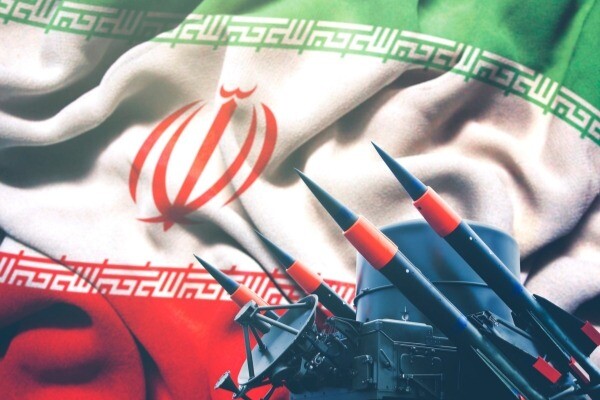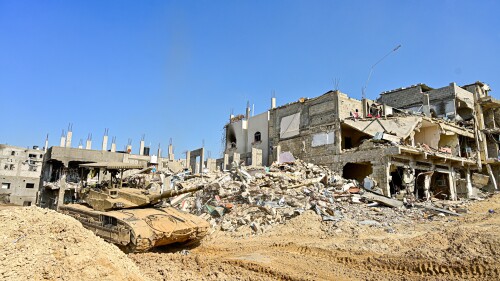A short survey of events from some of the fronts in the multi-arena, multi-level conflict now underway in the Middle East: Earlier this week, Israeli fighter jets carried out missions against two sites in southern Lebanon – Mis al-Jabal and Tyre Harfa. IDF artillery forces hit targets in the Har Dov/Shebaa Farms area.
The strikes followed an incident in the border area in which four IDF soldiers carrying out activities on the Lebanese side of the border were wounded by an IED.
These are the latest incidents in the undeclared conflict taking place between Lebanese Hezbollah and Israel since October 8, 2023. This conflict, which began, of course, in the wake of Hamas’s October 7 attacks, is of major dimensions and involves near-daily clashes.
The Latest Incidents that Have Occured
Two hundred and seventy-four Hezbollah fighters have been killed since October. Around 80,000 Israelis and over 100,000 Lebanese have left their homes in the border area. A combined total of 4,400 attacks have taken place, initiated by one or another of the sides since October, according to a recent study by the Center for Strategic and International Studies.
Alongside the overt conflict, the long-standing clandestine war continues. Lebanese officials are claiming Israeli involvement in the killing of Mohammed Ibrahim Surour, a Lebanese banker involved with Hezbollah.
In the attacks of April 13, the historically significant direct Iranian role has rightly commanded attention. But it should be noted that three proxy militias also participated in the Iranian assault.
Lebanese Hezbollah fired a barrage of rockets at IDF positions in the Golan Heights; the Yemeni Ansar Allah (Houthis) organization launched UAVs targeting Eilat (which were downed); and an Iraqi Shia militia has noted its involvement, which probably also involved launching UAVs.
Alongside the overt conflict, the long-standing clandestine war continues. Lebanese officials are claiming Israeli involvement in the killing in recent days of Mohammed Ibrahim Surour, a Lebanese banker involved with Hezbollah, whose body was discovered on April 9 in a villa in Beit Meri, a resort town overlooking Beirut.
Surour had been sanctioned by the US Treasury Department in 2019 for his involvement in transferring funds from Iran’s Islamic Revolutionary Guards Corps (IRGC) to Hamas in the West Bank and Gaza.
According to a report in the pro-Hezbollah al-Akhbar newspaper, he was lured to the villa on April 4. He had earlier been contacted by a woman calling herself Zainab Hammoud, who said she was waiting for a money transfer from Iraq. As for the $6,500 in cash placed alongside the body, al-Akhbar interpreted it as a signal from whoever killed Surour that the killing was not carried out as part of his financial dealings.
The details of Surour’s assassination offer an indication of the interconnectedness of Iran and its proxies and clients. Here is a Lebanese financier, reportedly cooperating with Hezbollah, but not a member of the organization, engaged in the transfer of funds from the IRGC to Tehran’s allies in Gaza and the West Bank. And apparently paying the price for this activity.
Reporting recently in Deir al Zur, in eastern Syria, I was fascinated to learn that the ongoing Iranian effort to stir up the Sunni Arab tribes east of the Euphrates against the US and its Syrian Kurdish allies is managed on the ground by veteran members of Lebanese Hezbollah.
One hundred and fifty people were killed in August-September 2023, after the SDF arrested Rashid Abu Khawla, a member of the Baqqara tribe who had been recruited by the Iranians.
These efforts involve the recruitment of mid-level figures among the tribes of this Arab-majority province, and the provision of weaponry to facilitate actions against the local US ally, the Syrian Democratic Forces.
One hundred and fifty people were killed in August-September 2023, after the SDF arrested Rashid Abu Khawla, a member of the Baqqara tribe who had been recruited by the Iranians.
Abu Khawla’s supporters declared the foundation of the Sons of Jazeera movement and fought running battles with the SDF in the oil belt around al-Omar – all directed from the area held by the Iranians and the Assad regime, west of the Euphrates.
Deir al Zur matters because it is located along the contiguous area of territory between the Iraq-Syria border and the borders with Israel and Lebanon, which Iran seeks to control. The tribal insurgency is intended to turn up the heat sufficiently to force the Americans to pull out.
This would facilitate the return of the Assad “government” to the area, and in practice enable freedom of operation for Iran and its various proxies.
So here we have four separate and discrete arenas of conflict underway simultaneously over the last week. They are, of course, only part of the total picture.
They range from a strategic state-to-state act of war (the Iranian attacks on Israel of April 13), via a local, limited, conventional clash between an Iranian proxy and Israel (the current fight between the IDF and Hezbollah in the area north and south of the Israel-Lebanon border), to an apparent act of clandestine warfare (the killing of Mohammed Surour) which revealed a financial trail stretching from Iran via Lebanese Hezbollah across to Hamas in Gaza and the West Bank and across to a seeming backwater, which on close examination turns out to be an area of strategic importance (Deir al-Zur), where an Iranian proxy is operating a yet more junior proxy in an ongoing challenge to the Americans and their allies.
What does this all add up to? Obviously, these separate arenas are not separate at all. Rather, they are all part of a single effort. That is the ongoing Iranian push for hegemony in the region, which includes a long war intended to end with the destruction of Israel. The labyrinthine web of which these four examples constitute elements is the instrument to be used to advance this ambition. The Iranian nuclear program is the insurance policy intended to prevent concerted action against it.
Obviously, these separate arenas are not separate at all. Rather, they are all part of a single effort. That is the ongoing Iranian push for hegemony in the region, which includes a long war intended to end with the destruction of Israel.
Gen. Kenneth McKenzie, former commander of CENTCOM, noted in an assessment this week of the significance of the April 13 Iranian attacks that they constituted an example whereby a country sought to “escalate to de-escalate.”
What McKenzie meant was that the attacks did not and were not intended to constitute an unambiguous and deliberate shift by Iran from the proxy warfare field to that of open confrontation. This was not a Pearl Harbor-style declaration of war. Rather, Iran’s intention was to “cow the opponent into changing its behavior by convincing it that it is at heightened risk.”
That is, Iran sought to respond to the killing of IRGC general Mohammed Reza Zahedi in such a way as to induce Israel away from any further open targeting of Iranian figures, and any further effort to turn the contest with Iran into a direct fight. The absence of a major Lebanese Hezbollah assault paired with the Iranian missile and drone attacks supports this view.
The reason for this is quite plain. Tehran likes the strategy of web-spinning and slow bleeding of enemies which it currently pursues. This approach has delivered dividends for Tehran over the last two decades – from effective domination of Lebanon, Iraq, Syria, and Yemen – and up to and including the current Gaza war. So it wants to get back to operating this strategy as soon as it can.
It’s possible that the befuddled West may yet act to permit this.
The exhortations from various leaders following the April 13 attacks that Israel now seek to “de-escalate” would suggest that many in the West want to give the Iranians precisely what they seek.
This further suggests that the West has, still, not yet grasped the nature of the game, even as the Iranians continue to vigorously pursue it on all fronts. The hour grows late.








